Curtains or Blinds – Which is Better?
Wondering, curtains vs blinds – which is better? Here we analyze the pros and cons of the two types of window treatments to help you make an informed decision.
There’s more to furnishing a home than choosing cute decor. Window treatments, in particular, are as functional as beautiful, making choosing the perfect item tricky. The two main styles of window treatments are blinds and curtains: which is better?
Curtains and blinds are stylish and practical window treatments. Choose curtains to prioritize aesthetic appeal, light and sound blocking, or heat insulation. Blinds are best for those on a budget, looking for light control, privacy, easy maintenance, and durability.
Before my sister’s home renovation and transformation, my brain reserved blinds for the office and curtains and drapes for homes. But when I started exploring, I realized that there is such a variety of gorgeous blinds that I had to make a choice.
Listing the pros and cons of each helped us to make a decision. Let’s look at which is better for your home, curtains or blinds.

Related Articles:
- What’s the Difference Between Curtains and Drapes?
- Which is Better – Blackout or Thermal Curtains?
- Lined Vs Unlined Curtains – Which is Better?
- How to Dress a Window Without Curtains
What is the Difference Between Curtains and Blinds?
To decide whether you want curtains or blinds in a room, it’s best to have all the information you need, so let’s start with defining what curtains and blinds are.
What are Curtains?
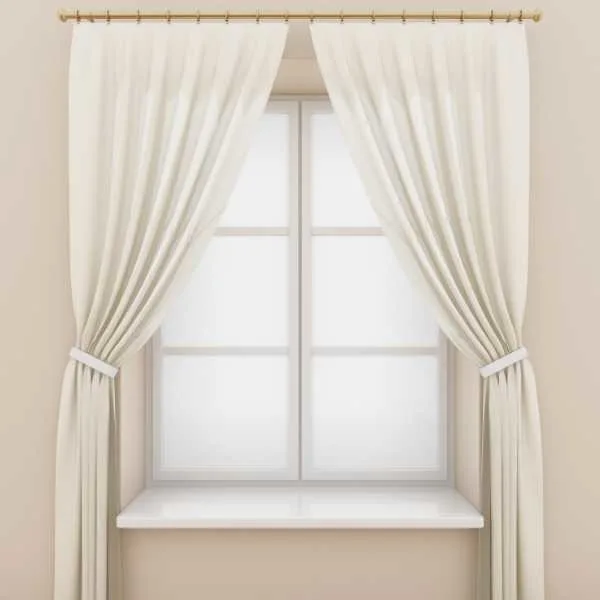
Curtains are soft window coverings made of panels of sheer or heavy, patterned or plain fabric. They hang from a curtain rail. They block out light and draughts, add to the aesthetics of a space, and finish the room.
Usually mounted in pairs, flanking a window or door, curtains are easily pulled aside and fastened with tie-backs to let in light or pulled together to cover the window.
You can hang curtains right above the window or nearer to the ceiling to create the impression of height. They may reach the floor or the window sill or cover one section of the window as café curtains.
If curtains are made of heavier fabric, like velvet, and reach the floor, they are referred to as drapes. However, many people use the words interchangeably.
What are Blinds?
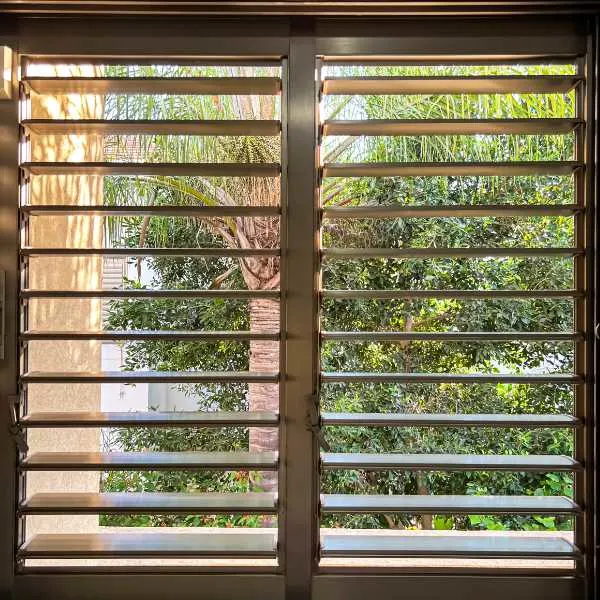
Blinds are also a form of window treatment, mounted in flat panels, intended to let in or block out light. The main difference is that they are made of hard materials.
Plastic or wooden slats or louvers are stacked together to form a blind mounted inside the window casing. You can tilt the slats to allow some light into the room or raise the blinds completely with a manual cord or automatic motor.
Blinds are fitted to cover the exact dimensions of a window, although you can fit longer blinds. There are a few kinds of blinds, including:
- Venetian blinds have horizontal slats. These can be regular-sized, mini, or even micro.
- Vertical blinds have vertically orientated slats, often made of slightly softer material like canvas. They’re great for patio doors or large windows.
- Roman blinds consist of a length of fabric with horizontal struts that allow it to fold up like a Venetian blind. These fall into the shade category and fall between curtains and blinds: they have the size and shape of blinds but the attractiveness of curtains.
- Roller blinds are made of a strip of fabric, like a curtain, but roll up via cords or a motor. These are also called shades.
Which is Better: Curtains Vs Blinds?
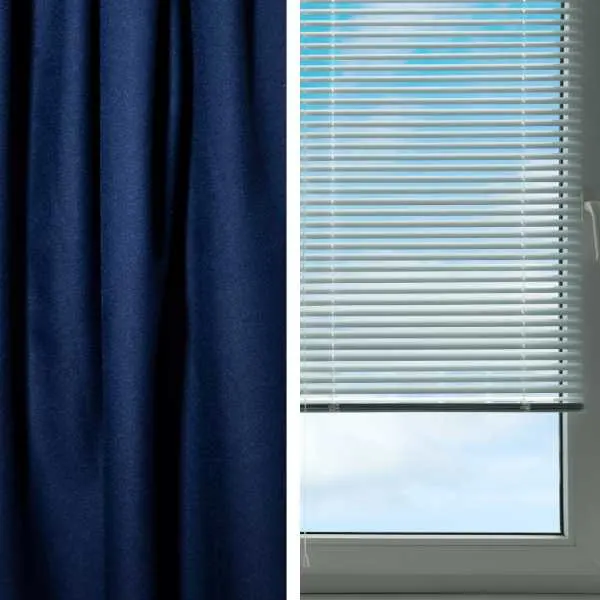
Blinds and curtains are both excellent window treatments, but which you choose depends on the ambiance you want to create, as well as practical considerations of sound, light, temperature control, and maintenance.
Versatility
The biggest advantage of curtains is that they are far more versatile than blinds: there are more than 30 curtain styles, including romantic valances, elegant swags, and solid blackout drapes.
You can choose curtains in a variety of colors, fabrics, weights, and textures to match any color palette and design style. Custom-made curtains can be made to suit any design you choose.
There is not as wide a variety of blinds as curtains, in terms of design, color, and material. However, blinds allow you to introduce natural materials like wood, faux wood, jute, and seagrass. You can also have bespoke Roman and roller blinds made in the fabric of your choice.
Because they’re not as obviously stunning, blinds are a great choice for a window treatment that won’t compete with the rest of the room or the view through the window. Another instance where blinds work well is if you have an oddly shaped or placed window, like over a radiator or sink.
Aesthetically Pleasing
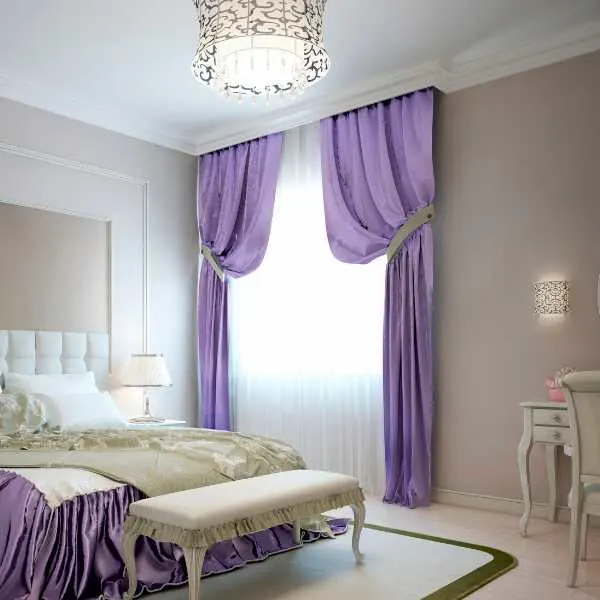
Because of their soft drape, the addition of color and interest, and the variety of designs, curtains provide an attractive finish to any room.
Depending on your style, curtains can create a dramatic, luxurious, or informal ambiance in a room. Curtains balance a room through their length, creating the illusion of space.
Blinds have moved far beyond creaky plastic louvers that get tangled in the cord. They are now a sophisticated, clean option for contemporary homes and are ideal for minimalist interiors. They’re also perfect for a subtle window treatment in a busy, cluttered room.
Light Blocking
Curtains are far better than blinds at blocking out light, especially in a bedroom or TV room. Blackout drapes can block light completely, so these are a good choice over sheer or unlined curtains, which only offer privacy.
You can purchase light-blocking roller and Roman blinds, especially if you are installing smart technology.
However, most blinds allow light around their edges and through their slats, so combine drapes and blinds to shut out light.
Light Control
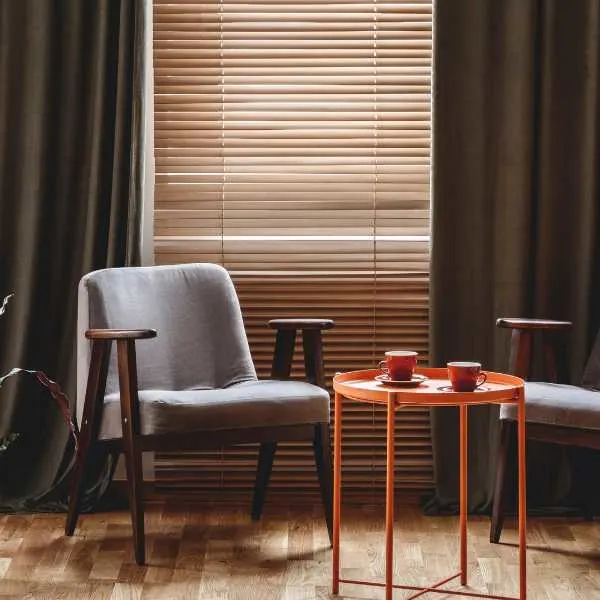
Curtains can only move sideways, either open or closed, so you can’t adjust light levels. Closed curtains block most of the light – unless they’re net – or let it all in. This is a consideration in rooms that get full sun.
Louvered blinds are ideal for light control, as you can adjust the slats to allow in more or less light. You can control glare by tilting the louvers with a rod or cord – instant light control. The great advantage is that you can minimize or maximize light without sacrificing privacy.
Soundproofing
Heavy drapes will also block sounds if your home is surrounded by traffic or neighborhood noise. Specialized soundproofing curtains are ideal for serious noise, so avoid gauze or unlined curtains if this is a problem.
Blinds are not a good choice if you want your window treatment to double as soundproofing. Sound will filter through even the thickest blinds.
Temperature Control
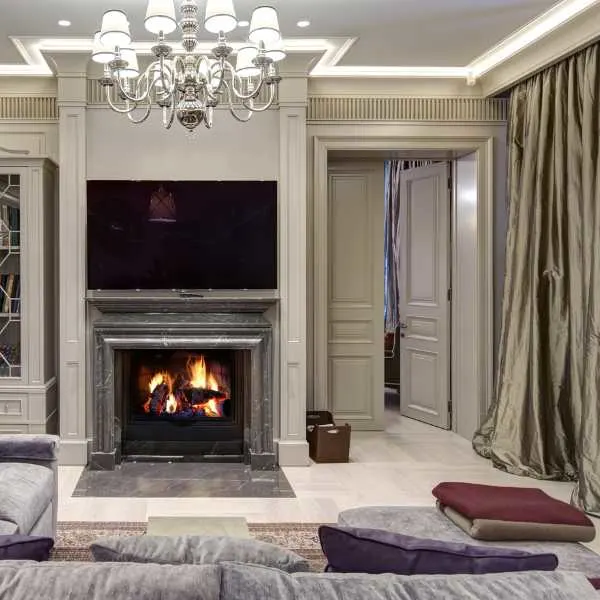
Curtains are also excellent for temperature control, whether keeping out baking sunshine, chilly draughts, or winter air.
Lighter curtains are ideal for hot temperatures, while heavy, lined curtains offer more insulation. Buying good quality, heavy curtains can keep a room warmer, reducing your energy bills.
Thermal roller blinds are the best bet for keeping a room cozy, while well-fitted wooden blinds can also help retain heat. You can add foam or rubber strips on the slats to contain heat or pair the blinds with drapes, but they are not generally good for heat insulation.
Most blinds are better for spaces that don’t need insulation or in warmer climates where you’d like hot air to escape.
Durability
The lifespan of blinds and curtains depends on the material and how well they’re maintained.
Curtains made from thinner fabric or sheer netting will last only around three years before starting to tear or look dingy. Heavy drapes of good-quality fabric can last 10 years or more if well-maintained. Curtains suffer from sun damage and discoloration in sunny spaces and mold in chilly, damp areas.
Blinds are generally more durable than curtains because they are made from stronger materials treated with a resistant coating to prevent sun damage and discoloration. Cheap blinds and fabric shades will only last three to five years, but well-made louvered blinds will look good for over 10 years.
Maintenance
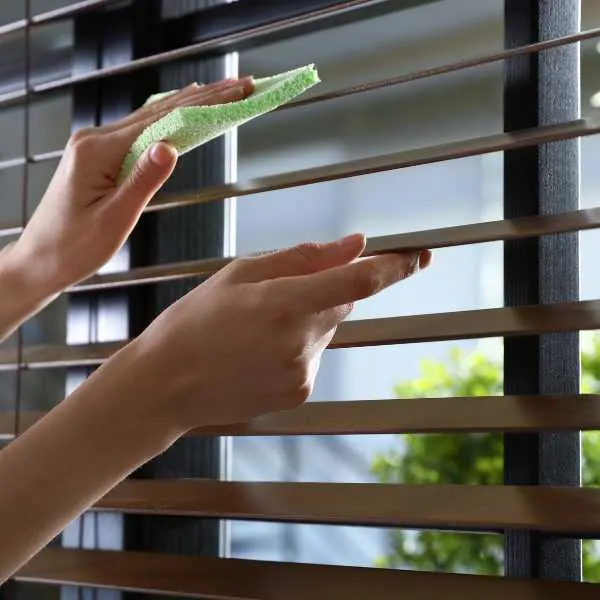
Curtains require far more maintenance than blinds. They should be cleaned quarterly, at least, since they pick up dust, dirt, odors, and even mold spores.
Apart from taking down and rehanging the curtains for cleaning, many fabrics are hand-wash or dry-clean only, making it an expensive and time-consuming task. Steam-cleaning can be an option, and you don’t have to remove the curtains, but check your curtains’ care labels first.
Blinds need to be cleaned at least monthly, more if you live in dusty conditions. However, you don’t take them down and rehang them: all you need is a damp cloth, diluted bleach, or a little vinegar. Wipe the slats to clean off dirt, then dry them with a clean microfiber cloth.
Because blinds are often made of waterproof material, they’re perfect for bathrooms, laundry rooms, and kitchens.
Price
You can find blinds far cheaper than curtains, making them pocket-friendly. Plastic blinds are mass-produced in standard sizes and are simple to install. However, roller and Roman blinds are pricier, while smart blinds are beyond most of our budgets (definitely mine!).
While you can buy standard, off-the-rack curtains, many homes require bespoke and customized lengths and sizes, which is pricey.
While curtains start off more expensive, you can get high-end curtains for less than you’d pay for high-end blinds.
Final Thoughts on Blinds vs Curtains
Curtains and blinds both have a place in your home. Choose curtains if your priorities are aesthetics, light blocking, soundproofing, or heat insulation. They’re also ideal for doors and windows you open regularly.
Blinds are the best choice for maximum light with maximum privacy at a budget price. Because they’re not as beautiful as curtains, they’re ideal for functional spaces. Combining the two gives you the advantages of gorgeous blackout curtains and the ability to filter light through a blind.
Did you find our analysis of the pros and cons of curtains and blinds helpful? Leave your comment below.
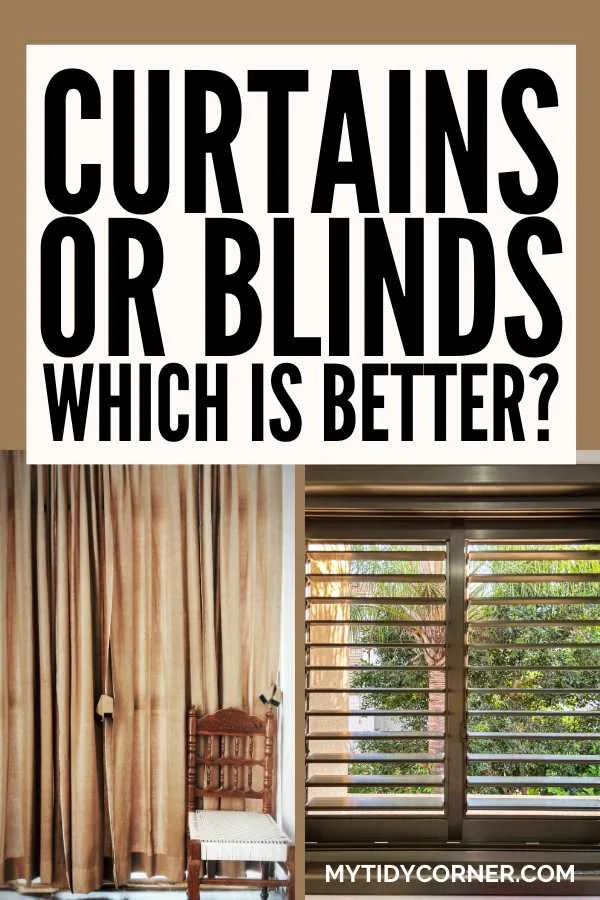

Heather
Wednesday 29th of May 2024
Thank you! This was helpful!
Carol
Thursday 30th of May 2024
I'm happy to hear that you found the article about curtains vs blinds helpful.